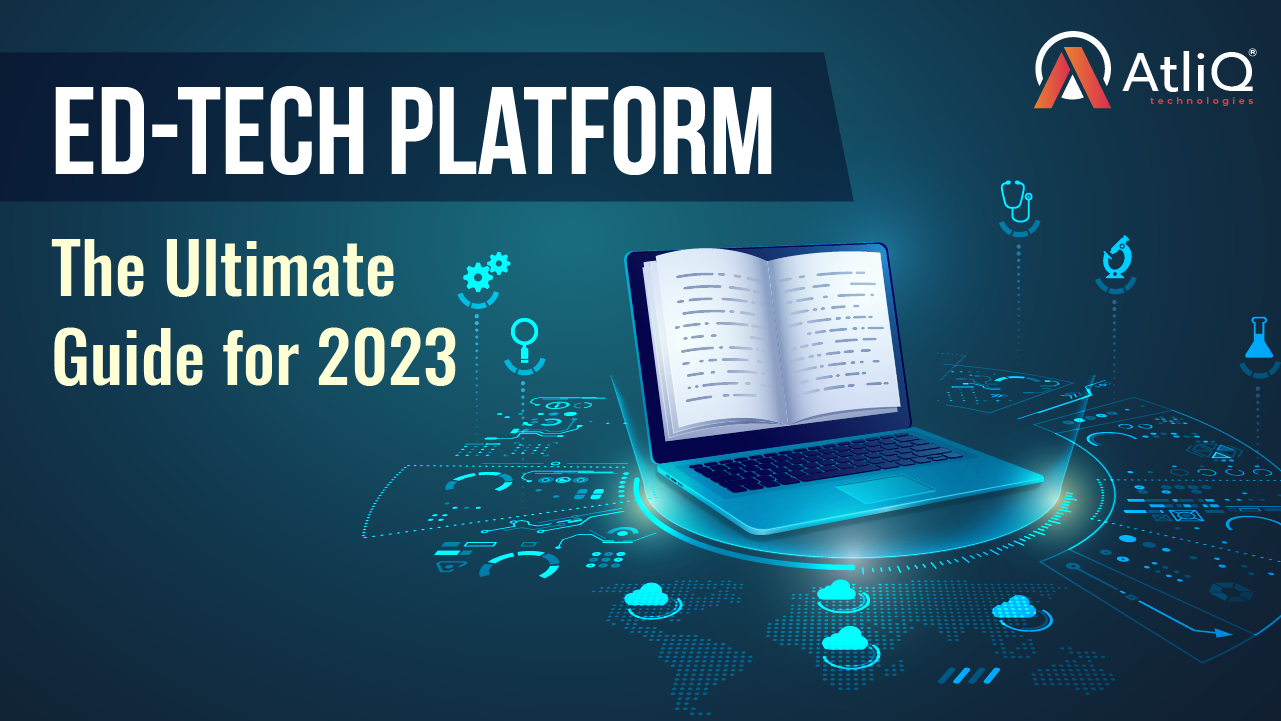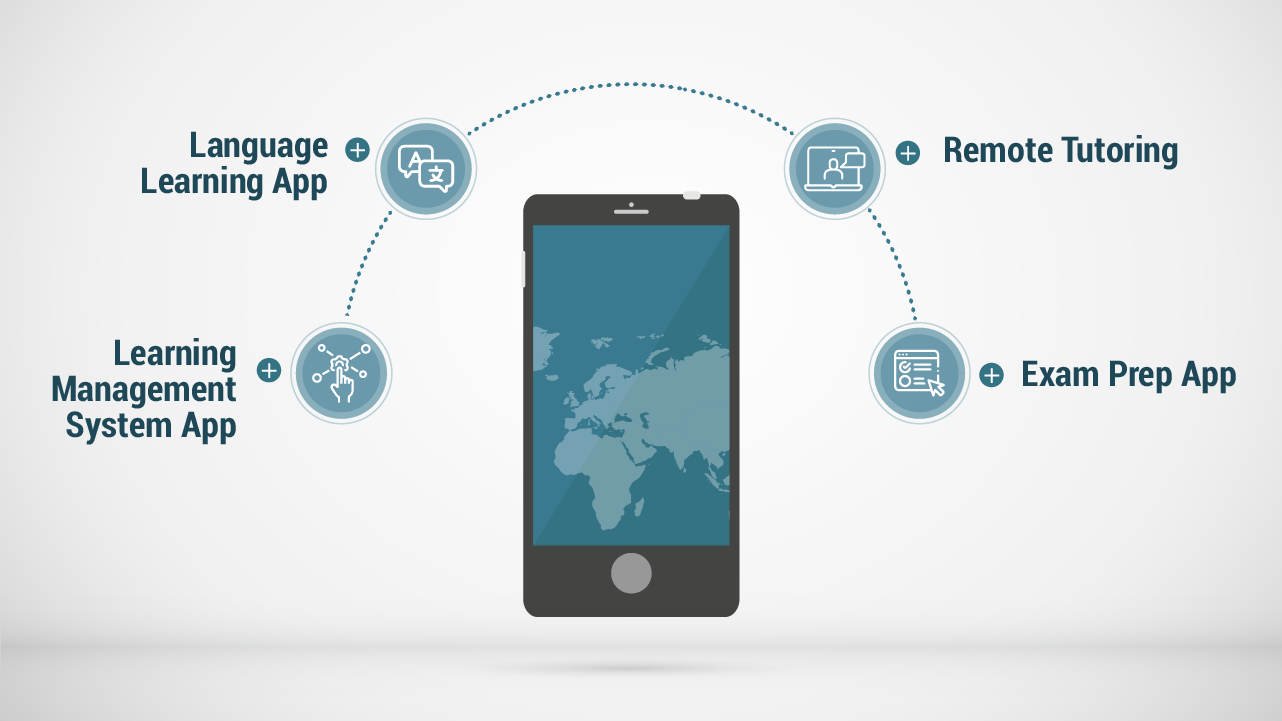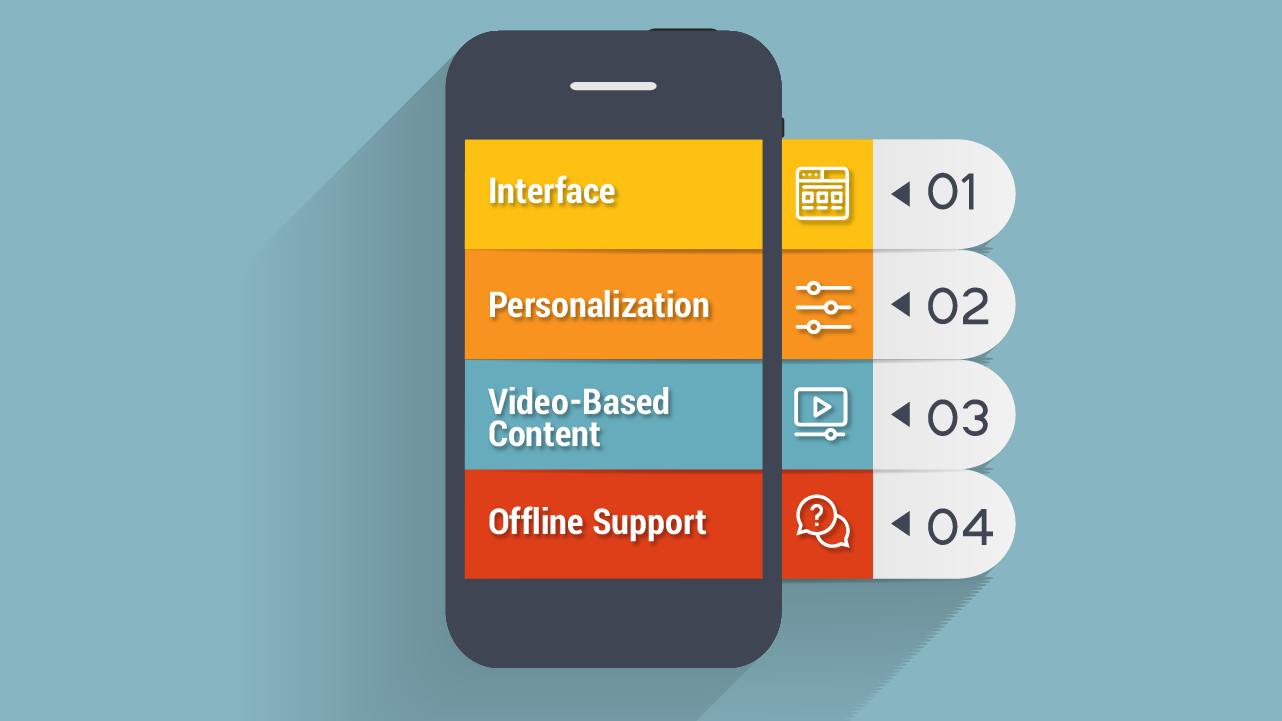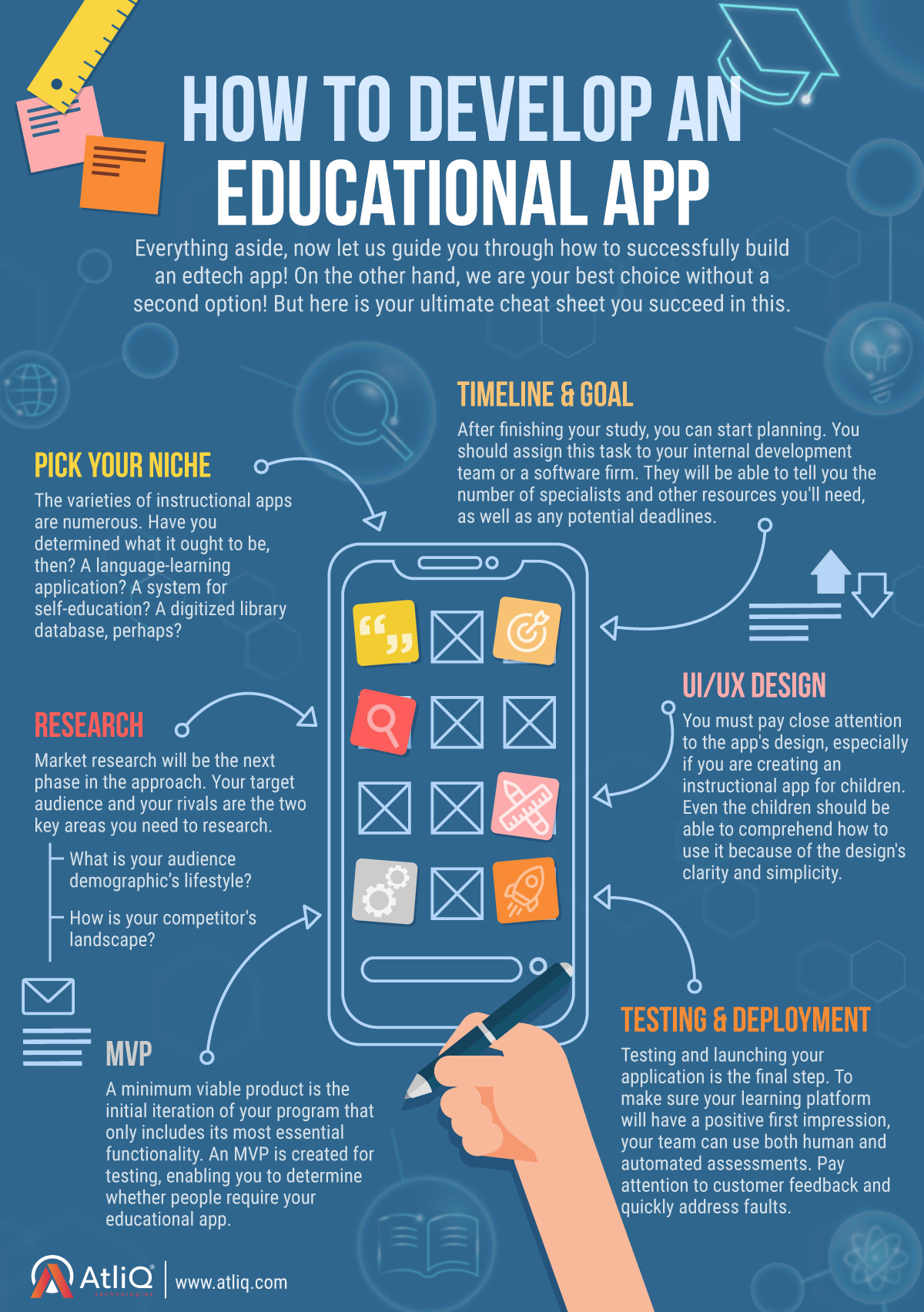
What recollections do you have of your school days? A teacher is taking a class few students pay close attention, others pass the time while they wait for the bell to ring. Textbooks or printed materials serve as learning tools. Education isn’t what it used to be, and the market for educational apps is booming right now. No longer are distance or lack of resources a barrier to education. E-learning is to blame for everything. The only tools a learner needs to study are a phone or a laptop. Nothing extraordinary has happened to us yet, but if we told our parents when they were younger, they wouldn’t believe it.
What is an EdTech Platform?
Software that supports and encourages virtual teaching is known as an educational application. It is intended for everyone who wants to advance education or develop new abilities, including children, candidates, educational institutions, experts, online course platforms, and all other people. The foundation of contemporary civilization is knowledge, and educational apps are one of many instruments that provide access to new prospects and improvements.
While there are a whole lot of software development companies, AtliQ Technologies promotes building a custom educational app solution. Now, you might wonder why to opt for a custom app over a pre-designed template. Here are your answers to “Why Should You Build a Custom Educational App Solution?”
- Meet the trends: In the software industry, contemporary technologies, approaches, and solutions are expanding quickly. Are you prepared to carry out one of those most recent decisions? You can make a learning app even if there are probably no ready-made software solutions available yet. You might even decide to sell it to someone else later. So hurry up and fill this gap while it is still open!
- Customized features: You will be offered a variety of functionalities when you acquire a ready-made solution, the majority of which you won’t need. A more practical strategy is to create your instructional software if you want to focus on your objectives without being sidetracked. Likewise, if ensuring security is your top issue, you can concentrate on doing so while creating your software.
- Keep Audience in mind: Study the preferences of your target audience and clearly explain your purpose before designing an app. Are you developing your app for special needs individuals, language learners, drivers, teachers, students, or librarians? Take into account all these particular requirements, create the most splendid UX/UI, and include the best content by creating a custom app. Additionally, by developing your app from start, you’ll have the chance to integrate it with the most widely used social networks in your nation or region, customize it for your culture, create it in any language, and ensure it’s error-free. Consider the most pertinent and engaging motivating messages when developing an educational app in particular to keep your target audience engaged.
Are you planning to build a customized ed-etch platform? Connect with us for a bespoke custom solution to wipe the competition.
Types of Educational Apps
Educational apps significantly alter both the teaching and learning processes of pupils. Many schools and other educational institutions are now investing in edtech app development services to connect instructors with students in real time.
- Learning Management System App: A learning management system (LMS) is a piece of software or web-based technology that is used to organize, carry out, and evaluate a particular learning activity. It is used for eLearning procedures and, in its most basic configuration, consists of two components: a server that handles the essential functions and a user interface that is controlled by teachers, learners, and administrators. An instructor can typically create and deliver content, track student involvement, and evaluate student performance using a learning management system.
- Language Learning App: The opportunity to study a new language has never been greater. Many language learning apps are very user-friendly and convenient. This is partly because learners can use them anytime they have free time. Apps for language learning are a fantastic way to simplify international travel. Apps for language learning offer immediate feedback and encouragement for repetition. They incorporate audio or video clips when teaching a language or incorporate chatbots to help with learning. Some apps provide push notifications to remind you to study and learn new material and a community of language learners.
- Remote Tutoring: Online tutoring became more than just a side job. It is a popular choice for a primary career. It is the ideal profession if you are knowledgeable and self-assured enough to teach others from a distance. There is nothing like contacting a tutor on demand, even when we are not living in a time of social alienation. The top online tutoring companies have thousands of instructors available at all times for each student. Additionally, because of the flexible schedules and low time commitment, these websites can draw in superior professors with advanced degrees in the subjects they claim to teach.
- Exam Prep App: Exams can be a source of anxiety. However, nothing remains unachievable if you have reliable software that supports concentration while studying and tracks and assesses progress. There are a ton of apps for competitive test preparation. Students preparing for competitive examinations no longer need to create mountains of printed material to keep their preparation current thanks to technological advancements. There are several free, simple-to-use, and incredibly helpful mobile applications for competitive exam preparation accessible on the Google Play store. With just one click, applicants can access a range of practice materials thanks to these instructional applications. Numerous educational apps provide a variety of advantages, such as free reading material, tests, and evaluations, as well as the ability to identify your weak areas and offer study tips.
Features of Developing Learning Apps
These features—registration, sign-up, login, dashboard, and in-app purchases—are shared by all apps. These constitute the fundamental components of each mobile eLearning app. Although they are typical of eLearning apps, few characteristics set them apart from the competition. Here is a brief overview of the features of eLearning apps:
- Interface: Every eLearning app must have a user-friendly user interface and experience. To break up the monotony of studying edtech app must have simple navigation, aesthetically pleasing designs, and powerful aesthetics. An edtech app’s user interface should not be intimidating. Developers frequently combine several features that could be confusing for users. Keep the user interface basic and only include elements necessary for the app’s function.
- Personalization: When an app allows for customization, users prefer to engage with it more, and eLearning apps are no exception. Edtech apps can be tailored based on the target audience’s age to provide a smooth learning experience. These apps are used by people of all ages, and options like adding mock exams, report cards, unique learning plans, etc are welcomed by learners & tutors. The app must offer users the solution they’re seeking to a problem.
- Video-Based Content: Undoubtedly, a groundbreaking aspect of an eLearning app is the video-based material. Students have benefited from video material since it allows them to watch or listen to classes that have already been recorded at any time. The likelihood of missing a lecture is thereby significantly reduced. As a result, it is essential for eLearning apps to include this capability, which is one of their primary selling points.
- Offline Support: To keep students interested offline mode is urgently needed. The offline mode is a lifesaver because a bug could impede the internet spectrum. Students can download educational content using this option.
How You Can Monetize Your Educational App?
The majority of business owners are searching for strategies to develop their learning applications using a premium plan. To take advantage of the eLearning trend, numerous bespoke app development businesses are creating instructional apps. Since there lies a mound of confusion and a lack of information to help your app to get monetize, we have come up with the best ways to monetize your educational mobile app. Below are the ways you can monetize your ed-tech app:
- Advertisements: One of the most popular ways to make money from an educational app is through advertising. Giving them visibility on the screen of your instructional app will generate ongoing revenue because the majority of pertinent firms want to establish a brand identity. This is possible with affiliate marketing’s assistance. On the app’s screen, popups with adverts automatically appear. However, it’s crucial to prevent constant ad flashing in front of users’ eyes. There may be a paid subscription option with no adverts available to a small group of customers. Users will have free access to view data without advertising if they upgrade to the app’s premium version. Another way to make money is to utilize advertisements to entice users to upgrade to premium status.
- Freemium: A freemium business model gives customers temporary, cost-free access to educational apps. Users must then purchase a monthly or yearly subscription after that. There are two versions of the instructional app: a free version and a paid one. Pilot components and orientation modules are among the basic features that can be used without charge. A premium edition offers more in-depth tutorials and advanced learning materials. By allowing users to try out the app’s features in a trial form, the use of educational apps can be strategically planned. When persuaded, customers use the educational app’s premium services to purchase the whole solution.
- Subscription: Another well-liked strategy for making money off of educational apps is subscriptions. In essence, the user must pay a membership fee to access the app- either monthly or annually. The benefits of a subscription include free access to informative articles, programs, lectures, or films. It is possible to establish a subscription’s maximum number of courses either based on the users or the visits. This can assist in making the courses exclusive and retaining the user for a longer time on the site. The subscription plan can also be chosen by the customer based on convenience and needs.
- Course Fee: The most popular choice is to charge course fees. A copyrighted course can be sold through an educational app. You can host free seminars and webinars to draw people to a particular course. If there is a lot of demand for the course, the price may initially be higher and then increase over time. Each course’s average cost is available. Finding reasonable pricing is crucial since user demand influences their decision to enroll in a course. It is not possible to consistently maintain demand and frequently alter the pricing strategy. Keep in mind that product strategy should come first, not the other way around when determining the course price.
How to Develop an Educational App
Everything aside, now let us guide you through how to successfully build an edtech app! On the other hand, we are your best choice without a second option! But here is your ultimate cheat sheet you succeed in this.
- Pick Your Niche: The varieties of instructional apps are numerous. Have you determined what it ought to be, then? A language-learning application? A system for self-education? A digitized library database, perhaps?
- Research: Market research will be the next phase in the approach. Your target audience and your rivals are the two key areas you need to research.
What is your audience demographic’s lifestyle?
How is your competitor’s landscape?
- Timeline & Goal: After finishing your study, you can start planning. You should assign this task to your internal development team or a software firm. They will be able to tell you the number of specialists and other resources you’ll need, as well as any potential deadlines.
- UI/UX Design: You must pay close attention to the app’s design, especially if you are creating an instructional app for children. Even the children should be able to comprehend how to use it because of the design’s clarity and simplicity.
- MVP: A minimum viable product is the initial iteration of your program that only includes its most essential functionality. An MVP is created for testing, enabling you to determine whether people require your educational app.
- Testing & Deployment: Testing and launching your application is the final step. To make sure your learning platform will have a positive first impression, your team can use both human and automated assessments. Pay attention to customer feedback and quickly address faults.
Summing Up,
The manual is your only reliable source of information on how to create educational apps, their costs, potential revenue streams, and the most notable success stories in the sector. Once you’ve completed each stage, you may begin to bring your idea to life. We have already assisted numerous companies in developing and releasing mobile educational solutions. Our experts are now prepared to assist you in doing the same. To ensure that your app will be a hit, we use all of the experience we’ve gained from working on past projects to complete your responsibilities and stay in regular contact with you. Send us a message if you wish to discuss your concept.


